حملات حیدری Hamlat Haidari (The Campaigns of Hyder) 1849?
RCIN 1197007
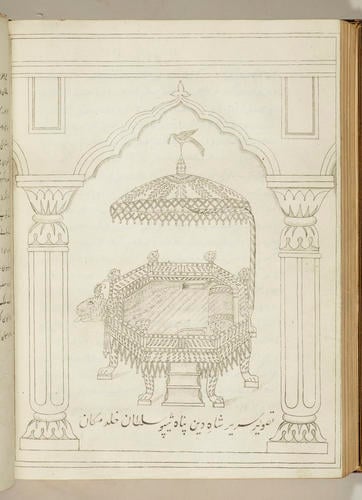
Ghulam Muhammad (1795-1872)
حملات حیدری Hamlat Haidari (The Campaigns of Hyder) 1849?

Ghulam Muhammad (1795-1872)
حملات حیدری Hamlat Haidari (The Campaigns of Hyder) 1849?

Ghulam Muhammad (1795-1872)
حملات حیدری Hamlat Haidari (The Campaigns of Hyder) 1849?
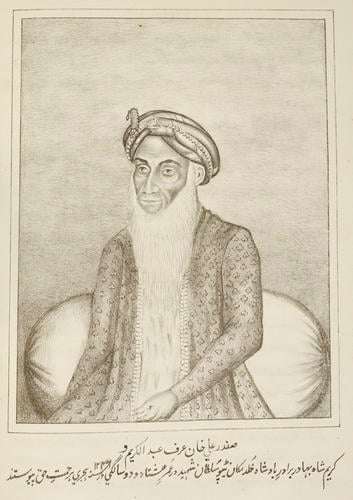
Ghulam Muhammad (1795-1872)
حملات حیدری Hamlat Haidari (The Campaigns of Hyder) 1849?
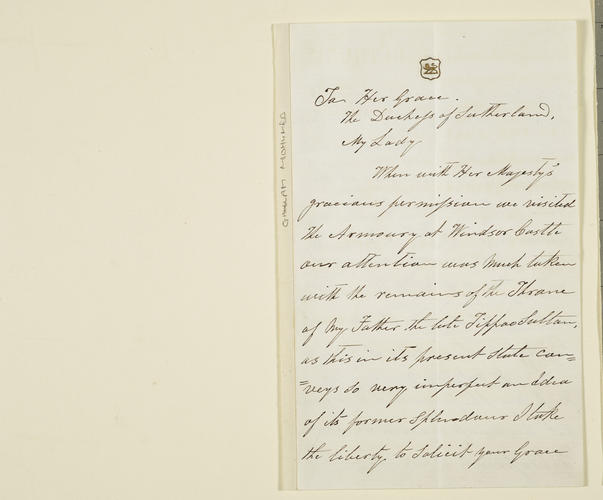
Ghulam Muhammad (1795-1872)
حملات حیدری Hamlat Haidari (The Campaigns of Hyder) 1849?
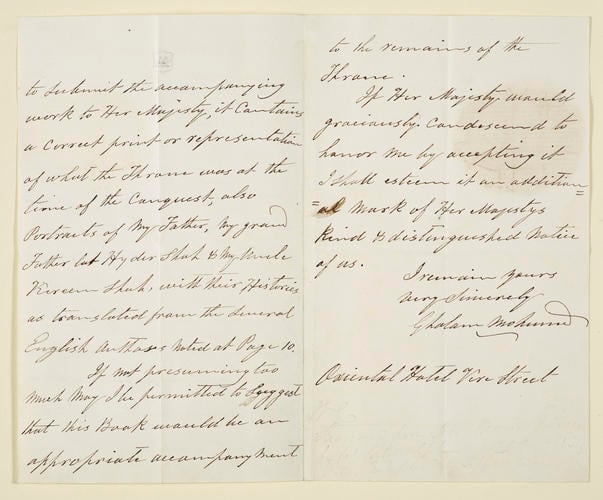
Ghulam Muhammad (1795-1872)
حملات حیدری Hamlat Haidari (The Campaigns of Hyder) 1849?
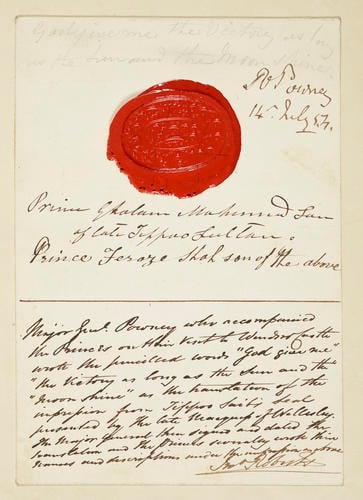
Ghulam Muhammad (1795-1872)
حملات حیدری Hamlat Haidari (The Campaigns of Hyder) 1849?
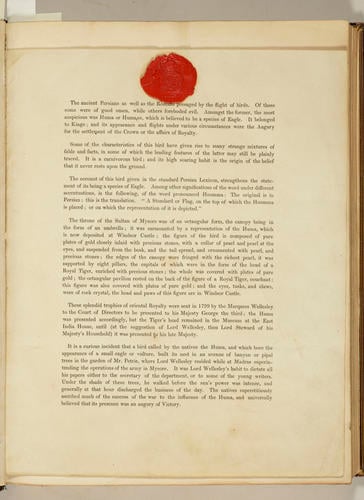
Ghulam Muhammad (1795-1872)
حملات حیدری Hamlat Haidari (The Campaigns of Hyder) 1849?








-
An Urdu partial translation by Ahmad Ali Gopamawi of the Karnamah-i Haidari, a Persian history of Haidar Ali and Tipu Sultan compiled by Ghulam Muhammad (1795–1872), Tipu’s fourteenth son (see RCIN 1051617). The author presented this volume to Queen Victoria in 1854. It contains portrait prints of Ghulam Muhammad and his son Feroz Shah, as well as Tipu’s brother Abdul Karim, and a print depicting Tipu’s tiger throne.
Ghulam Muhammad was only four years old when his father was killed. The East India Company initially sent him and his siblings to live in the city of Vellore but transferred them to Calcutta after the Vellore Mutiny of 1806. The prince lived at Rasapagla, a southern suburb of Calcutta and visited England twice, in 1854 and 1859, to make a case to the secretary of State for Tipu Sultan’s descendants to receive a special grant (for this, see RCIN 1145828).
Queen Victoria recorded her first meeting with Ghulam Muhammad and Feroz Shah at Buckingham Palace on 28th April 1854 in her journal:
“Pce Gholam & his son were presented at the Drawingroom. He is the last surviving son of the Tippo Sahib, & a fine, kind, modest old man, who bears the highest character & always lives at Calcutta as a private gentleman, although treated by the Governors General with the greatest distinction, as a Prince, the son of a powerful & gallant fellow enemy [...] He speaks English perfectly & expressed himself again & again as so happy to see me, it having been his greatest wish, — saying all this with the graceful phraseology of the East [...] As usual with all natives of the East, they were full of self possessiveness & had perfect manners. — The good old man touched me, for I could not but think of his poor Father, & what he might have been, instead of now only being a Pensioner!”
The Queen also noted that Ghulam Muhammad walked her mother, the Duchess of Kent, into dinner that evening (placing him ahead of the Duke of Wellington in rank) and he sat next to Victoria for the duration of the meal.
During their stay, the two Mysore princes were granted permission to view at Windsor Castle the trophies of Seringapatam (Srirangapatnam), including a seal inscribed with the words ‘God give me the victory as long as the sun and the moon shine’ (RCIN 65358). They made a wax impression of the seal, signing their names underneath it, which was pasted into this volume, which Ghulam Muhammad presented to Victoria on that occasion.
Ghulam Muhammad wrote the following letter to the Duchess of Sutherland, then Mistress of the Robes to Queen Victoria:
My Lady,
When with her Majesty's gracious permission we visited the Armoury of Windsor Castle our attention was much taken with the remains of the Throne of My Father, the late Tippoosultan, as this in its present state conveys so very imperfect an idea of its former splendour I take the liberty to solicit your Grace to submit the accompanying work to Her Majesty, it contains a correct print or representation of what the Throne was at the time of the Conquest, also Portraits of my father, grandfather Hyder Shah & my Uncle Kereem Shah, with their Histories as translated from the several English authors noted at Page 10.
If not presuming too much may I be permitted to suggest that this Book would be an appropriate accompaniment to the remains of the Throne.
If Her Majesty would graciously condescend to honor me by accepting it I shall esteem it an additional mark of Her Majesty's kind and distinguished notice of us.
I remain yours
Very Sincerely
Ghulam Muhammad
Oriental Hotel Vere St
The volume was placed alongside the remains of Tipu Sultan's throne in the North Corridor of Windsor Castle.
In 1871 Queen Victoria invested Ghulam Muhammad as Knight Commander of the Star of India. -
Creator(s)
(translator)(binder) -
Alternative title(s)
Humlat hyderi







